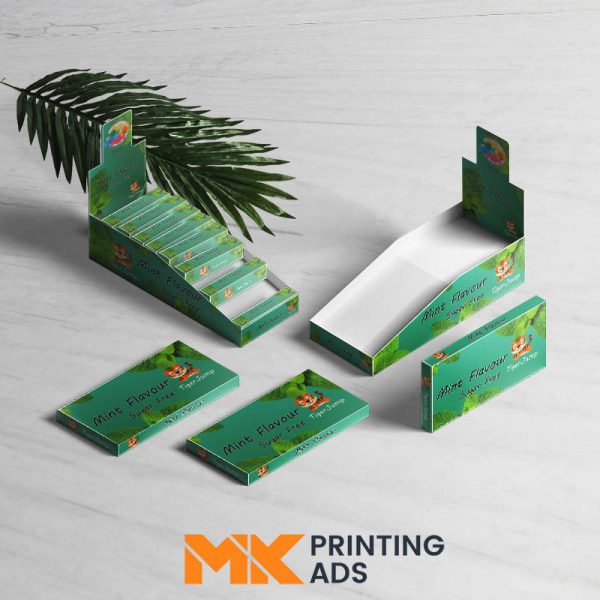In the competitive world of retail, where first impressions matter, the presentation of products is a crucial factor in attracting customers and influencing purchasing decisions. Display packaging goes beyond the traditional role of packaging; it serves as a showcase for products, enhancing their visual appeal and creating a memorable brand experience. This exploration delves into the art of display packaging, examining its significance, design elements, and the impact it has on elevating products and captivating consumers.
The Significance of Display Packaging
- Display packaging is a form of visual merchandising that captures the attention of potential customers. It goes beyond merely holding and protecting the product; it is a dynamic element that contributes to the overall aesthetic of a retail space, creating an immersive and engaging shopping environment.
- Well-designed display packaging reinforces brand recognition. Consistent branding elements such as logos, colors, and typography integrated into the packaging design enhance the visibility of the brand. This familiarity helps customers identify products associated with a specific brand, fostering loyalty.
- Display packaging plays a significant role in triggering impulse purchases. When products are presented attractively and prominently, customers are more likely to make unplanned purchases based on the visual appeal of the packaging and the perceived value of the product.
- In crowded retail spaces, differentiation is essential. Unique and eye-catching display packaging sets products apart from competitors. The distinctiveness of the packaging design makes it easier for consumers to notice and remember a particular brand or product.
- Display packaging is designed to showcase products effectively. Clear visibility of the product, along with features like transparent windows or open displays, allows customers to inspect the item before making a purchase decision. This transparency builds trust and confidence in the product.
Design Elements of Display Packaging
- The strategic placement of display packaging within a retail space is crucial. It should be positioned to attract attention, considering factors such as foot traffic, sightlines, and focal points. Effective placement maximizes visibility and encourages customer interaction.
- Incorporating branding elements into display packaging is essential for brand consistency. Logos, color schemes, and typography should align with the overall brand identity, creating a cohesive and recognizable visual language.
- The design should prioritize the visibility of the product. Clear and unobstructed views of the item, whether through transparent windows, open displays, or well-arranged layouts, allow customers to assess the product’s features and quality at a glance.
- Interactive elements in display packaging can engage customers and create a memorable experience. This could include touch-and-feel features, interactive screens, or product demonstrations that encourage customers to interact with the packaging and the product.
- Lighting plays a significant role in enhancing the visual appeal of display packaging. Strategic use of lighting can highlight specific products, create a focal point, and add a sense of ambiance to the retail space. Well-lit displays attract attention and emphasize product details.
- The choice of colors in display packaging should align with the brand’s messaging and the desired emotional response. Color psychology can be leveraged to evoke specific feelings or associations, influencing how customers perceive the product and the brand.
- Thematic displays create a cohesive and immersive experience for customers. Whether aligned with seasonal themes, promotional events, or specific product launches, thematic displays add an element of storytelling and captivate customers through a curated visual narrative.
- Efficient use of space is a critical design consideration in display packaging. The layout should be organized and optimized to accommodate various products, allowing for easy navigation and ensuring that each item receives adequate attention.
- Display packaging should be durable to withstand the rigors of a retail environment. Additionally, there is a growing emphasis on sustainability in packaging design. Choosing eco-friendly materials and incorporating sustainable practices aligns with consumer preferences for environmentally conscious brands.
Impact of Display Packaging on Consumer Behavior
- Display packaging significantly increases the visibility of products. Items featured in prominent displays are more likely to attract attention, leading to increased awareness and consideration among consumers. Increased visibility positively influences consumer behavior, especially in competitive retail settings.
- Well-designed display packaging encourages customers to explore products further. When the packaging is visually appealing and strategically positioned, customers are more likely to interact with the display, pick up products, and explore additional offerings, leading to increased engagement and potential sales.
- The visual impact of display packaging contributes to creating a lasting impression on consumers. Memorable and aesthetically pleasing displays enhance brand recall and influence purchasing decisions. Positive impressions formed through effective display packaging translate into increased brand loyalty.
- Transparent and honest presentation of products through display packaging promotes brand trust. When customers can clearly see the product inside the packaging and assess its features, they are more likely to trust the brand. This transparency builds confidence and influences purchasing decisions.
- Display packaging is a powerful tool for generating impulse purchases. When products are showcased attractively, with a focus on visual appeal and perceived value, customers may be prompted to make unplanned purchases based on the immediate desire created by the display.
- The overall design and presentation of display packaging influence consumer decision-making. Elements such as color, layout, and thematic displays evoke specific emotions and responses, shaping how consumers perceive the product and the brand. A well-executed display can guide consumers toward positive purchasing decisions.
Conclusion
In the realm of retail, where products vie for attention and consumer choices are shaped by visual appeal, display packaging emerges as a powerful tool for brands seeking to elevate their products and captivate audiences. The art of display packaging goes beyond functionality; it is a fusion of creativity, strategic design, and a commitment to creating memorable brand experiences. From attracting attention on retail shelves to influencing consumer behavior and fostering brand loyalty, custom food boxes plays a multifaceted role in the success of a product.


